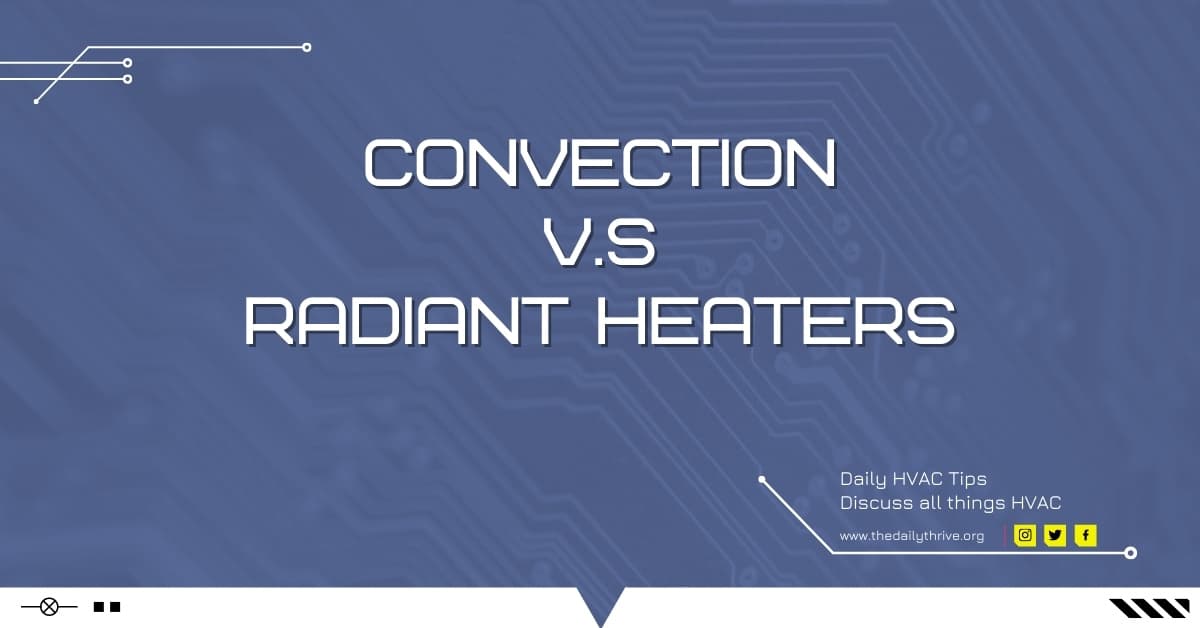Convection heaters and radiant heaters, also called infrared heaters, are the most common types of space heaters. They’re both a great heating choice for small rooms but operate in different ways. A convection heater heats only the air in the room, while a radiant heater warms the objects in a room.
Space heaters are becoming more prominent thanks to the recent “go green” ethos sweeping retail today. They are two classes of the same appliance, but the key difference between convection vs radiant heaters is the way they heat.
What is a Convection Heater?
A convection heater (also known as a forced-air system) is probably the most common type of heating system. Most portable space heaters, including oil filled radiator heaters and ceramic heaters, are also considered convection heaters.
Convection heaters provide heat by blowing or pulling air over a heated surface.
What is a Radiant Heater?
A radiant heater (also sometimes called an infrared or quartz heater) delivers the source of heat to the floor level, not the ceiling. Radiant energy is the oldest form of heating used to provide comfort and is the basis for all heating systems.
Radiant energy is absorbed by an object without physical contact with the heat source or by heating the surrounding air, as is the case with convective, forced air systems.
Which Heater is Right for Me?
The benefits of getting radiant or convection heaters are even more apparent when compared to using a central HVAC system. They use less energy and can noticeably lower your heating expenses. In particular, radiant heaters are noted for being the most energy-efficient of the two types.
Radiant heaters heat spaces by using electricity to warm a filament, which emits heat via direct infrared radiation. In a nutshell, they warm other objects by touching them. This means that radiant heaters aren’t dispelling hot air into the ether, which isn’t needed.
What About Noise Levels?
Overall, convection heaters are louder than radiant heaters because of the way they heat air and because electric heaters often use fans. Especially if you are looking for a space heater for a bedroom or workspace, check the specifications, which often list in decibels how loud their heaters run.
Energy Saving Tips
Whether you choose a radiant heater or a convection heater, you can save money by making sure your heater has the right features.
To optimize money-saving opportunities, look at the following things when choosing your heater:
- Output settings, which allow you to specify how much air is being released. Presets like low, medium, and high are good, but for the best calibration, choose a device with a thermostat.
- Timers, to ensure heaters aren’t left on when they aren’t in use
- Appropriate Strength. Your heater should use 100W per square meter of the floor. Anything more than that is overkill and wastes electricity.
- Safety. Look for a space heater that automatically shuts off when it’s tipped over.
Conclusion
Radiant heat provides more effective heat distribution in the room and does not create cold zones, which are very common in convection heaters. It is also more energy-efficient in several ways. No condensation is produced by the radiant heater, which minimizes the risk of mold formation, and the walls can’t cool down. For allergy sufferers, a heating system based on the principle of radiant heat is the best choice!






